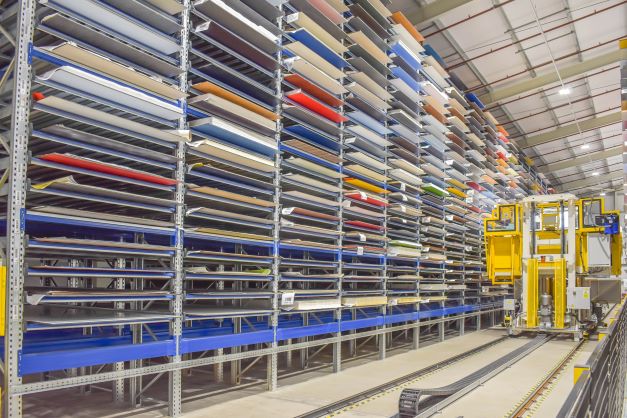In reflecting on its seven awards received in 2021 and more than 80 accolades picked up over the last three decades, intralogistics specialist Linde Material Handling (MH) recognises this achievement as the result of its ongoing innovative strength and wealth of ideas produced for the benefit of its customers.
All the prizes that have been awarded to the company since the mid-1980s can now be seen in a dedicated “Awards” section on the corporate website, assigned to the categories of Brand, Product/Innovation, Design and Communication.
For almost 120 years, the name Linde (Material Handling) has stood for reliable technology, intelligent solutions and innovative products that offer users measurable added value. “Our entire workforce is committed to the success of our customers who benefit from our team’s great passion and innovative strength,” said Stefan Prokosch, SVP Brand Management Linde Material Handling.
“That’s why the Linde brand and our technical concepts, vehicle design and communication have won countless awards. We are particularly proud of these accolades because they are proof that our customers appreciate our commitment to offering the highest possible level of efficiency, safety, ergonomics and sustainability. With the new Award section on our homepage, we are making this success transparent for all visitors.”
2021 – another award-winning year
One of the most coveted awards in the material handling industry in Germany once again went to Linde MH in 2021. On behalf of the VerkehrsRundschau magazine, an independent market research institute surveyed a representative number of purchasing decision-makers from the transport and logistics sectors about the best-known brands.
Right back in 2002, when Springer Fachmedien München GmbH and the publishing house Heinrich Vogel offered the Image Award for the first time in the category “Forklift trucks, Handling and Warehouse Technology”, Linde MH won the coveted prize. Since then, the competition in this category has been held at different intervals. The constant, however, is the goods handling specialist, who has always emerged as the winner since then.
The VerkehrsRundschau editorial team commented on the latest results as follows: “When it comes to forklift trucks, pallet trucks, order pickers and so on, no manufacturer is as well regarded as Linde Material Handling.”
Linde MH also continued its successes of recent years in the 2021 readers’ poll carried out by publishing house ETM. For the 10th time, the company won the “Best Brands” award offered by the publications trans aktuell, lastauto omnibus, FERNFAHRER and eurotransport.de, which recognises innovative products and services from the transport and logistics industry. But it was not only in terms of brand image that Linde MH was able to impress customers and experts.
In the “materialfluss PRODUCT OF THE YEAR 2021” readers’ poll, the automated Linde R-MATIC reach truck took first place in the Industrial Trucks category. Moreover, the access authorisation system “Linde Safety Guard: Door Control” emerged victorious in the Identification Technology category. The competition, which was launched in 2020, is decided via online voting.
A large number of awards have been received over the past few decades. The various types fill a large glass showcase in the reception area of Linde MH’s headquarters in Aschaffenburg. Among them is the Business Superbrands Award, which is given by Superbrands Germany, the world’s largest brand evaluation organisation, who has listed Linde MH as one of the top companies in its industry since 2020.
Other prizes have been awarded in honour of innovations. One example is the “Best Practice Innovations” award from Logistra magazine, which belongs to the Huss publishing house. In this instance, an award was given in 2014 for the practical viability and innovative concept of the company’s fuel cell technology, and another was awarded in 2020 for Linde’s latest IC counterbalance trucks.
In the same year, the judges of the Fork Lift Truck Association (FTLA) were impressed by the ergonomic steering wheel of the Linde N20 C low-lift order picker and presented it with the coveted “Award for Excellence” in the “Ergonomics” category.
Increasingly, assistance and personal protection systems are becoming the focus of awards. One example is the “interactive warning vest for the protection of persons in in-warehouse traffic”. This solution, which is unique in the industry, received the 2021 Industry Award, presented by WirtschaftsWoche and DEKRA, in the category “Safety at Work”.
And the list of successes still does not end there: “interairport Europe 2019 Excellence Award”, “Öko Globe” and “MM Logistik Award” are further examples.
Added to this is the large number of accumulated design awards: Over the years, Linde MH has won as many as 10 “reddot” and 12 “iF Product Design” awards. Linde MH received its first iF Design Award in 1985 for the legendary 351 series forklift model in the henceforth typical Porsche industrial design.
In 2018, the roadster version of the Linde E20 R to E35 R electric forklift range was honoured with the prestigious French industrial design award Observeur du Design, which is presented annually by the design association Agence pour la promotion de la création industrielle (APCI). The German Design Award followed in 2019, presented in recognition of the exceptional forklift model designed without an A-pillar, which offers even better visibility of the driving area and load.
Last, but not least, Linde MH proved its creativity in terms of communication and marketing and was found to be worthy of a corresponding award. In particular, the StaplerCup, a championship in which forklift drivers can demonstrate their skills and promote occupational safety, has earned the company numerous prizes over the years – including the “Best of Business (BoB)”, “ECON”, “DPRG”, “Galaxy” and “PR Report Award Gold” awards.






